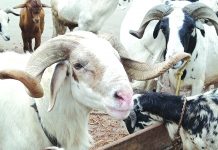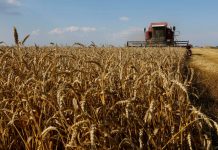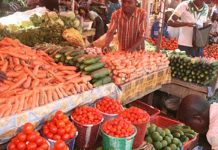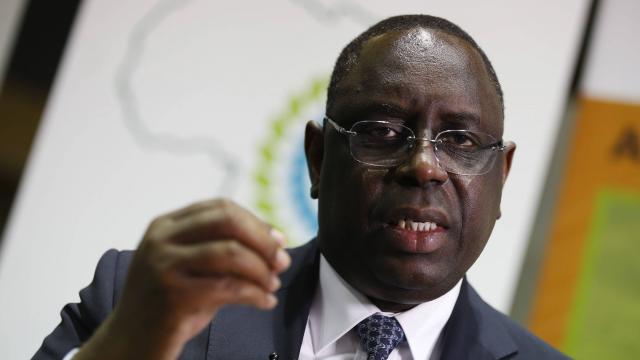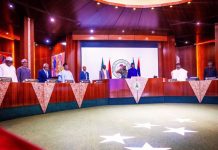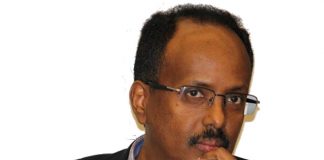For many people in Africa, the talk about Climate change seems like folktale. The people will swear that such talk is pure distraction. What they would rather talk about is agriculture, the cost of their staple foods and perhaps employment. But whether Africans believe it or not, the problems associated with climate change have come home to roost. In Senegal, we hear that Climate change has made life harder for farmers in different ways: shorter rainy seasons, more frequent and longer dry spells and droughts, a lower water table, floods, coastal erosion, destruction of mangroves, and disruption of fish stocks. But most worrisome of all is the salinization of soil across large tracts of coastal and riverine farmland. In the village of Dioffior, about 150 kilometres southeast of the Senegalese capital, Dakar, residents have mounted a protracted battle against salt: an enemy that contaminates their land, decimates their crops and, as agriculture is the mainstay of the region’s economy, drives up poverty and food insecurity.
Rising sea levels brought about by climate change have greatly increased the salt content of the nearby Sine River. In the vast Sine-Saloum delta, between 700,000 and one million hectares of land have been affected over the last 30 years. The Fatick region, where Dioffior is located, and which is the birthplace of President Macky Sall, has suffered more than most. As Seydou Cissé, who works at Senegal’s National Institute of Pedology explains, “For decades in Sine-Saloum, the soil, which used to be known for its quality and productivity, has been badly damaged by climate change, which has led to the salinization of the waterways of the delta.”
Unfortunately, soil salinization is just one of several harmful effects of climate change in Senegal. Dioffior residents say the rice fields around the village were abandoned 30 years ago. Since then, locals have worked tirelessly, carrying endless baskets of sand and rock to build dykes that turn lost fields into arable land again. The dykes keep the salty river water at bay and protect bodies of fresh water.
Among those involved are some 200 women, members of an association called Sakh Diam, (“sow peace” in the Wolof language) who have recovered more than 100 hectares of land. They have their eyes set on a much larger area: in 2015 the local authorities allocated them 1,000 salty hectares of farmland.
Sakh Diam has won financial support for its endeavours not only from the government of Senegal but also from those of Belgium and Japan.”These rice paddies used to be tans,” Marie Sega Sarr, the group’s president, told reporters as she worked away in her paddy, using the Wolof word for salty land. “Nothing grew here until the Support Project for Small Local Irrigation, known as PAPIL started. The anti-salt dyke you can see over there is Baboulaye 1. Where we are now is Baboulaye 2. There is another one at the nearby commune of Djawanda. In all, there are nine dykes around Dioffior built to combat the salinization of our agricultural land.”
PAPIL was set up in the early 2000s by Senegal’s government, with help from partners such as the African Development Bank, AFDB, and the Islamic Development Bank. It ran until 2015 and has been replaced by the Multinational Programme for Resilience to Food and Nutritional Insecurity in the Sahel region. The objectives of the program include reclaiming thousands more hectares of salinised land in the Fatick region by 2020. “Our grandparents used to cultivate here and fed themselves from their crops,” said Marie. “Between the arrival of the salty waters and the irrigation project, we had trouble feeding ourselves. Agriculture is our main activity. We were forced into unemployment.”
Sakh Diam wants its work to rejuvenate the region, allowing the community to provide for itself once again. “We helped gather sand and rocks to build the dykes you can see. That’s been going on for six years. You can see for yourself that wild grass is growing here,” Marie said. “If we get enough rain, we hope we can harvest on this area so as to feed our families as our ancestors did.”
The optimism about the success of Sakh Diam’s engagement is palpable. The Secretary-General of the organization, Omar Faye told reporters: “It is paying off, it is beginning to show results. We have started to reuse this land to grow rice. Right here, some 80 hectares have been reclaimed.” In the greater Dioffior area, “we harvested 30,500 tonnes of rice in 2015”, he declared.

